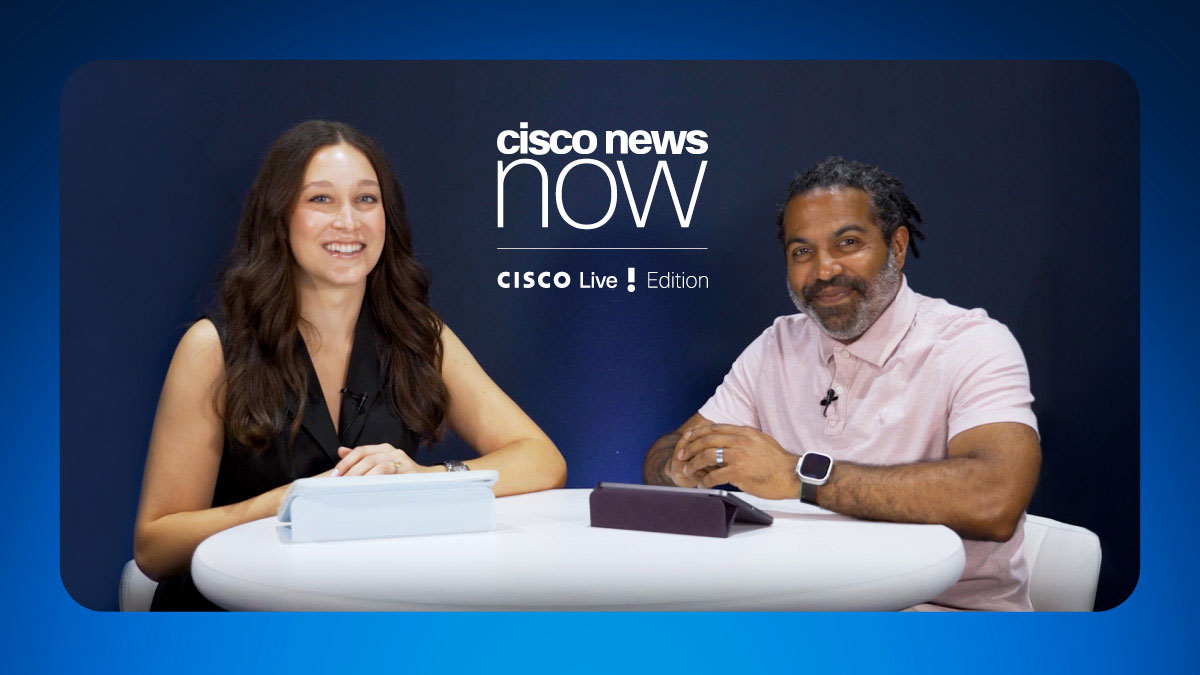- More Information on Serivce Provider Solutions
- More Information on Cisco Enterprise Network Management
- Information on Cisco, Microsoft, and Intel Networked Multimedia Connection
- More Information on Microsoft and Cisco Security Alliance
- Directory Services Collaboration -Frequently Asked Questions (FAQ)
LAS VEGAS -- May 7, 1997 -- Microsoft Corp. and Cisco Systems Inc. todayannounced a letter of intent in which Cisco will license Active Directory fromMicrosoft for use in managing network infrastructure and to provide richernetwork services. As part of this letter of intent agreement, Cisco and Microsoftwill jointly develop extensions to Active Directory to integrate advancedmanagement of network elements and services. Products developed as a result ofthis letter of intent will make it possible for network managers tounify their network infrastructures and to accelerate the development of richernetwork services via Cisco IOS software. It will also allow service providers tosimplify service delivery and provide new sets of services for their customers.
Cisco chose Active Directory as a component of its foundation to give customers richer network services because it provides a comprehensive solution for both enterprise and Internet environments.Microsoft and Cisco are enhancing the Active Directory in the Microsoft (TM)Windows NT (TM) Server network operating system to provide support for advancednetwork services such as on-demand bandwidth management. To preserve customers'current investments, Cisco will implement Active Directory on several UNIX-basedplatforms. This is the latest in a series of agreementsletters of intent betweenthese two industry leaders, aimed at accelerating the development ofnext-generation, network-based applications, such as networked commerce, thatwill form the basis of global networked businesses of the future.
"Cisco is the leading provider of network infrastructure products, formingthe backbone of both enterprise networks and the global Internet," said JimAllchin, senior vice president in the personal and business systems group atMicrosoft Corp. "Microsoft is the leader in client and server operating systems. The need for a consistent directory across network infrastructure, clients andservers means that the directory service standard has now been set."
In the past, directory services could not simultaneously meet all of thedemanding needs of both Internet and enterprise customers. Microsoft and Ciscoshare the goal of enabling integrated management of servers and network servicesas well as a new generation of networked applications. Network services, appliedconsistently across both public and private networks, mean that users enjoy afull range of services no matter where they are - in the office, working at homeor traveling on business. Active Directory offers the best of Internet standardssuch as LDAP, DNS, HTTP and X.500 and can be used to provide uniform networkservices for customers of all sizes as well as to tailor network services on agroup or individual basis. It can also streamline administrative processes ofall networked resources, thus lowering the total cost of ownership.
"Cisco's vision to help customers build global networked businesses beginswith network services delivered through Cisco IOS software," said Ed Kozel,senior vice president and chief technical officer of Cisco Systems. "We choseActive Directory because it is the only directory service that is flexible andscalable enough to address the demanding needs of the Internet and of theenterprise. This letter collaborationof intent signals an important advance inextending network capabilities using directory services to providepersonalization that is, per-user customization, of network services such asquality of service."
Customers such as service providers, corporate network administrators and endusers will benefit from this agreementletter of intent. Windows NT Server andCisco products are critical components in enabling service providers to deliveran increased spectrum of network services. The result of the agreementletter ofintent will be to give service providers the option of offering a customizedpricing plan for the set of services that best meets customer needs. Forexample, service providers could offer a variety of network performance andbandwidth-availability to meet the specific needs and budgets of their customers.Enterprise customers will be able to implement a single set of network servicesfrom the desktop to the server and to the wide area network. With a unified setof desktop and network services, network managers will be able to manage thenetwork based on corporate-wide policy. Through the personalization of networkservices, it will be possible to build networked applications such as on-demandcollaboration. These services enable network managers to offer user-specificaccess to network resources based on individual user requirements.
About Microsoft
Founded in 1975, Microsoft (NASDAQ "MSFT") is the worldwide leader insoftware for personal computers. The company offers a wide range of products andservices for business and personal use, each designed with the mission of makingit easier and more enjoyable for people to take advantage of the full power ofpersonal computing every day.
Microsoft and Windows NT are either registered trademarks or trademarks ofMicrosoft Corp. in the United States and/or other countries. Cisco IOS,CiscoSecure and Cisco Systems are trademarks and Cisco and the Cisco logo areregistered trademarks of Cisco Systems Inc. Other product and company namesherein may be trademarks of their respective owners.
Note to editors: If you are interested in viewing additional information onMicrosoft, please visit the Microsoft Web page atCisco Systems
Cisco Systems, Inc. (NASDAQ: CSCO)is the worldwide leader in networking for the Internet. News and information areavailable at http://www.cisco.com.
Cisco IOS is a trademark, and Cisco, Cisco Systems, and the Cisco Systemslogo are registered trademarks of Cisco Systems, Inc. in the U.S. and certainother countries. All other trademarks mentioned in this document are the propertyof their respective owners.



